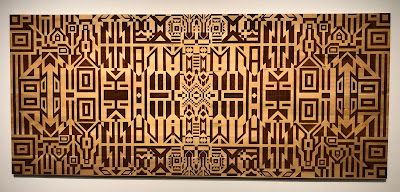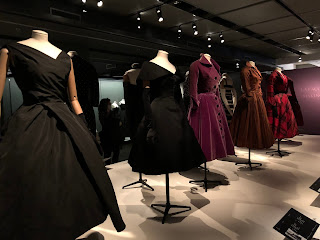Patti Mollica, the author of "How to Paint Fast, Loose and Bold", offers an on-line class of the same name through the Winslow Art Centre. We are now half-way through the four classes, and I thought I would post an update here.
I am a real newbie when it comes to figurative acrylic painting, so I'm finding there's a lot to absorb.
Mollica's style is all about exuberant colour and energetic brushstrokes, but the basis of her approach to composition is quite technical. Whether she begins with a photo or from life, she translates her image into a value study, reducing the subject to three or four values of dark, medium and light. She transfers her value study to her support, using charcoal, and then mixes and applies paint, always keeping in mind the value of the chosen colours. Being able to rely on this structure allows her to be more expressive with colour and application of paint.
Above is one of ten photos Mollica provided for our first efforts.
I cropped the image a bit and converted the colours of the photo into a value study, using black, white, and a neutral gray. At this point, the artist has the option of deviating from the original, to make a successful design. For one thing, it's important to have some imbalance. It would be rather boring to have equal amounts of the three values: one should dominate. Even more important is to have enough information to allow the viewer to decipher the subject. Above, the cylindrical nature of the solids are conveyed by means of highlights, credible shading and shadows, and small details that reinforce the perception of solid shapes.
Another consideration is to establish a focal point, and use a dramatic contrast of value to establish that. Where is the eye drawn? (Often it's to a figure.) Can that focal point be strengthened by directional lines in the composition?
This value study is then transferred to a substrate, using charcoal to indicate areas of light, middle and dark values. Paint is then applied on top of the charcoal drawing.
Above is my first effort, 12" x 9". I decided the image needed to be cropped more closely, and used a 10" x 10" format for my second effort, below.
I also applied green paint to the panel as a first coat. This "underpainting" peeks through and makes the painting more interesting, especially if its colour is the complement of the subject.
I think the shadows need to be softened in the image above. Perhaps the instructor will offer some other advice, as she provides support on the class message board and during class time as well.
Here's another still life subject that I worked with:
Notice that in my value study I've transposed some of the values. The highlights are important details, giving information about the shapes of the solids as they are struck by the light.
I used an underpainting of turquoise for this one, though it's not as evident as I would like. Again, I think the shadows should have softer outlines.
When choosing our colours, it's important to be conscious of their values. If I need a dark, it's important that what I mix reads as a dark, to reinforce the composition. So by putting a dab of the paint on our "value checker", we can get a better sense of whether it suits our needs or not.
Mollica is an advocate of using as big a brush as we can handle, to allow for expressive brushstrokes. So far I'm being too careful with mine. Her palette often becomes tainted with colours transferred in the process of applying paint. This is all to the good, according to the instructor. Again, I'm not working loosely enough to accommodate this approach, but it's something I will try to put to use in my next assignments.
Below is a value study of a third photo provided by the instructor. Perhaps something more challenging for my next efforts?


















































